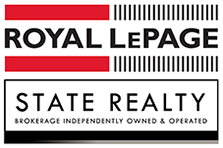
Seasonal lift in Hamilton inventory welcomed by potential homebuyers after surge in first quarter home price gains
Improved inventory levels offer buyers more choice heading into spring market
HAMILTON, April 19, 2022 – According to the Royal LePage House Price Survey released today, the aggregate price of a home in Hamilton increased 32.4 per cent year-over-year to $946,900 in the first quarter of 2022. During that same period, the median price of a single-family detached home increased 35.6 per cent to $992,500 and the median price of a condominium increased 18.3 per cent to $550,100.
“While demand remains strong, a healthy seasonal lift in inventory is an exciting development for homebuyers who are struggling to find the right home in their desired neighbourhood,” said Joe Ferrante, broker of record, Royal LePage State Realty. “In addition to more choice, buyers are finding slightly less competition when it comes time to bid. We are still seeing multiple offers but we are also seeing a shift to a healthier spring market compared to last year.”
Ferrante does not expect the measures within the 2022 federal budget to impact the Hamilton housing market in the short term as new supply is needed immediately to cool market conditions.
“It will take years for construction to catch up with demand but the result will be a healthier Hamilton real estate market,” said Ferrante. “Hamilton is a great place to live and work. Increased housing allows our city’s population to grow and the economy thrive.”
Ferrante added that the two-year temporary ban on foreign buyers is not expected to dampen activity as they are not a material demand driver within the market.
“We are seeing some potential homebuyers move to the sidelines to determine the impact of rising interest rates on the housing market. While this shift could temporarily reduce demand, low supply is expected to remain a long term issue,” said Ferrante. “However, this spring might unveil a brief window of opportunity for buyers.”
Royal LePage is expecting home prices in the region to increase through the spring as demand remains historically high.
Nationally, the aggregate price of a home in Canada increased 25.1 per cent year-over-year to $856,900 in the first quarter of 2022; the highest gain on record since the Company began tracking aggregate prices. As strong buyer demand continues to outpace supply in almost every market from coast to coast, Royal LePage is forecasting continued strong seller’s market conditions this spring.
“Entering 2022, we had anticipated a strong first half, and moderating real estate markets thereafter. Call it buyer fatigue or easing demand, these periods of uncomfortably high home price appreciation do run their course. We are seeing the first signs of moderation in some regions, as more inventory is becoming available and competition eases slightly,” said Phil Soper, president and CEO of Royal LePage. “The first quarter of the year was so strong, however, that we are bumping up our 2022 outlook. And, home prices will continue to climb in the months ahead as a result of our relentless low supply-high demand imbalance.”
The Royal LePage National House Price Composite is compiled from proprietary property data, nationally and in 62 of the nation’s largest real estate markets. When broken out by housing type, the national median price of a single-family detached home rose 26.7 per cent year-over-year to $906,100, while the median price of a condominium increased 19.7 per cent year-over-year to $612,900. Price data, which includes both resale and new build, is provided by Royal LePage’s sister company RPS Real Property Solutions, a leading Canadian real estate valuation company.
Royal LePage is forecasting that the aggregate price of a home in Canada will increase 15.0 per cent in the fourth quarter of 2022, compared to the same quarter last year. The previous forecast, released in December, 2021, has been revised upward to reflect the continued strength of the market through the first quarter of the year.
Federal and Provincial Housing Policy
On April 7th, the federal government announced its 2022 budget that includes more than $10 billion to support housing affordability along with demand-side policies. The federal government has acknowledged that 3.5 million new homes are required by 2031 to keep up with demand.
“Access to suitable shelter is one of the great social challenges of our time. I am pleased to see it addressed in the federal budget, however the budget requires significant participation from provincial and municipal governments to hit its target to provide housing for current demand as well as future demand from new household formation and immigration,” said Soper. “By providing municipalities with funding to accelerate planning and delivery processes, the government is meaningfully helping the process overall, which is a welcomed step in the right direction.”
In regards to the temporary two-year ban on foreign buyers, Royal LePage does not expect the policy to provide material relief to potential homebuyers, as this group does not make up a significant portion of homeowners in Canada. In addition, recreational properties are exempt from the ban.
Ontario
The Ontario government tabled a new housing bill last month with several initiatives aimed at speeding up municipal approval processes for development and allowing more four-to-six-storey residential buildings. The province also updated the rules of its existing Non-Resident Speculation Tax, increasing the tax from 15 to 20 per cent and expanding its reach from the Golden Horseshoe and Southern Ontario to the entire province.
“While new policies aimed at improving real estate market conditions for buyers will take years to produce results, I commend the Ontario government for taking action to increase supply through needed densification. In Toronto, this will give young homebuyers hope that they will be able to purchase a property in the future,” said Karen Yolevski, chief operating officer, Royal LePage Real Estate Services Ltd. “Potential homeowners should not expect relief from the tax increase applied to non-residents, as foreign buyers make up a small percentage of the total market.”

